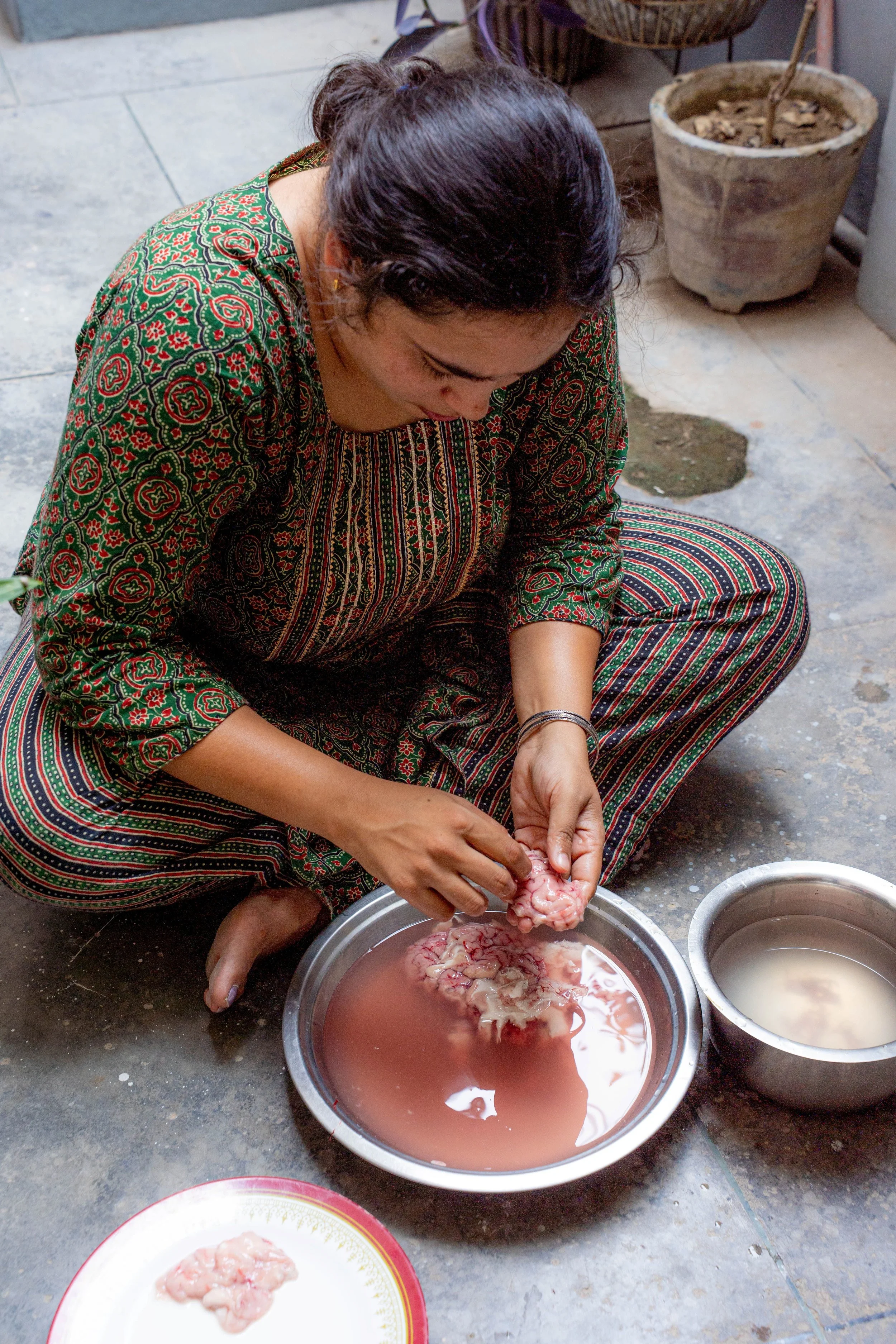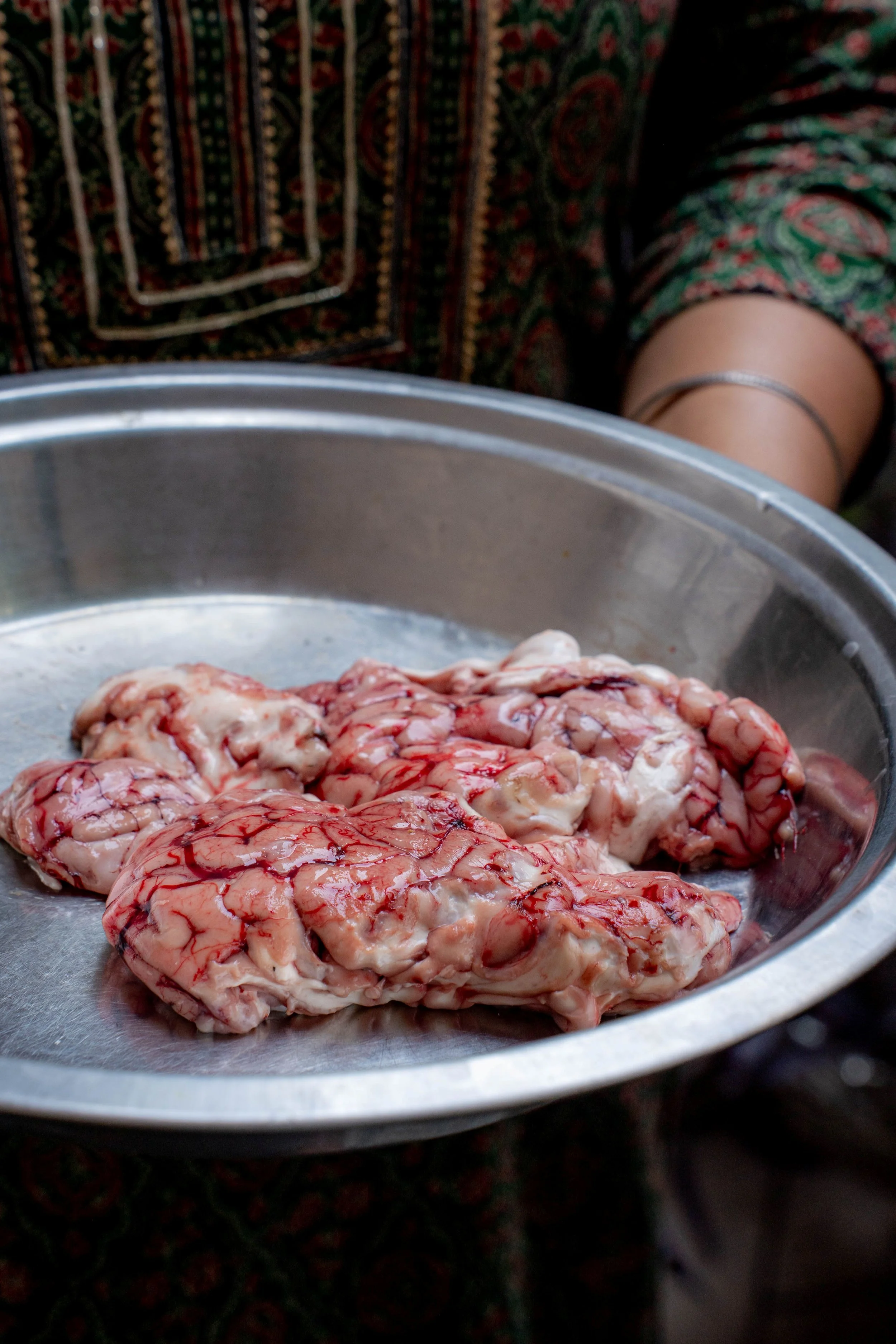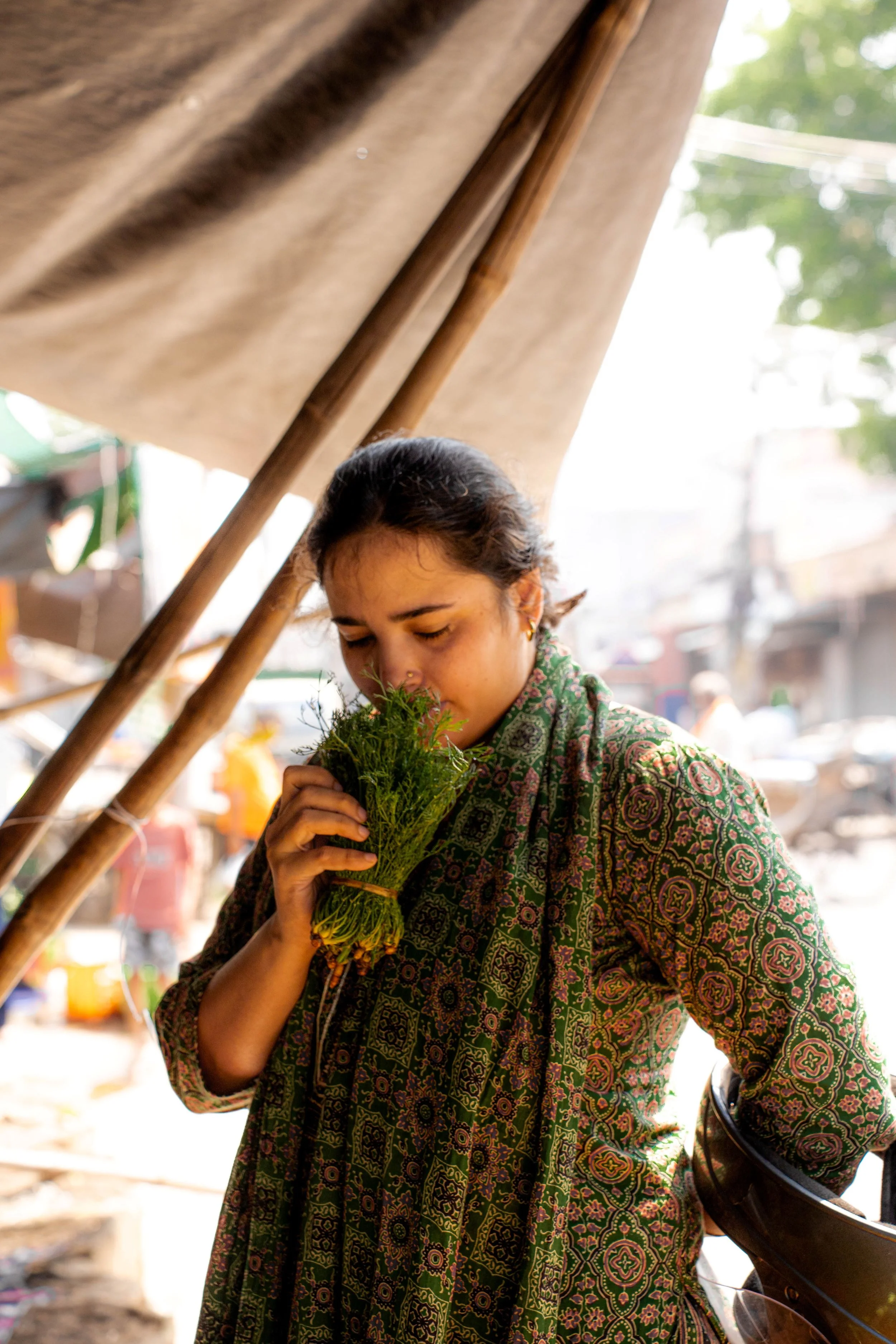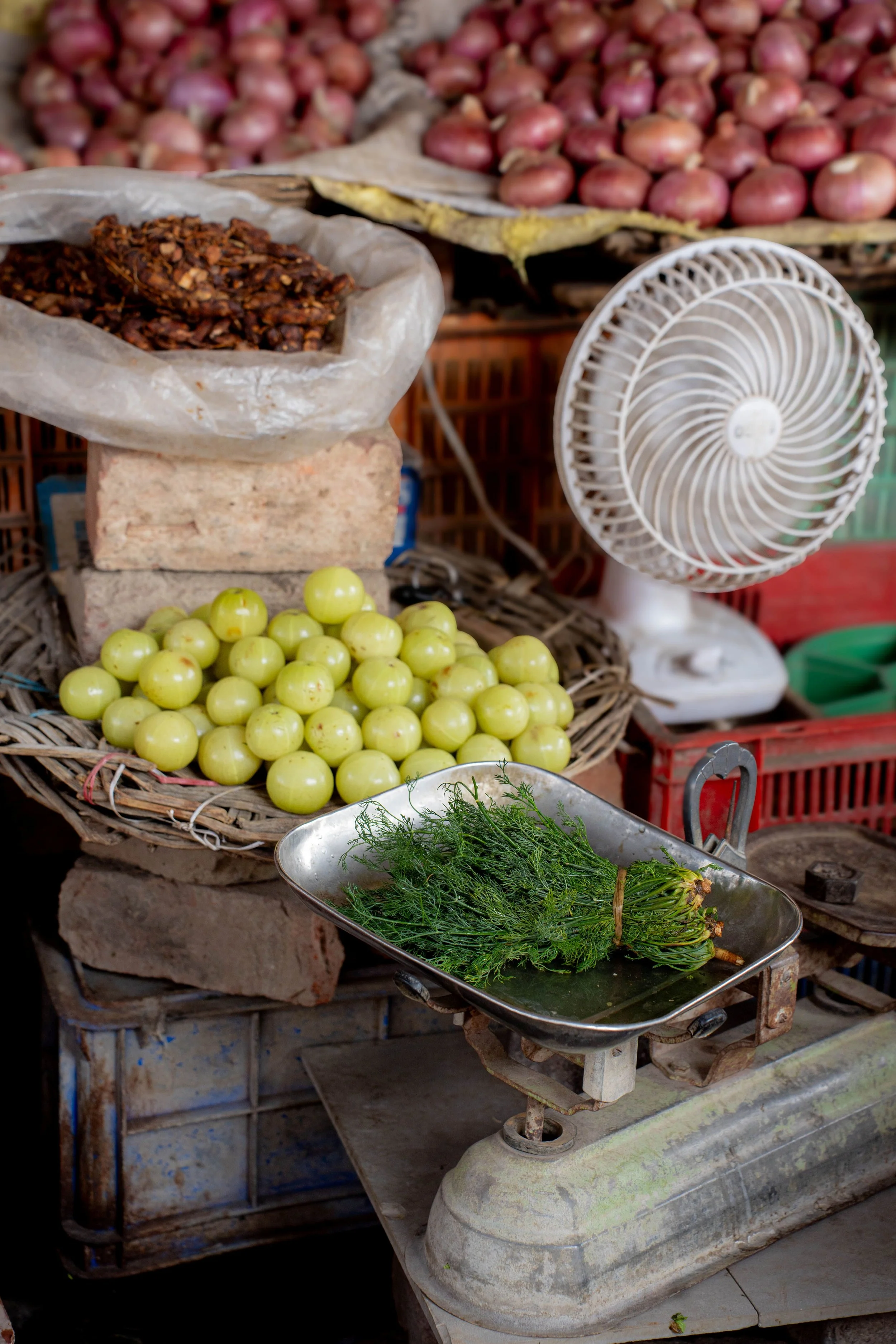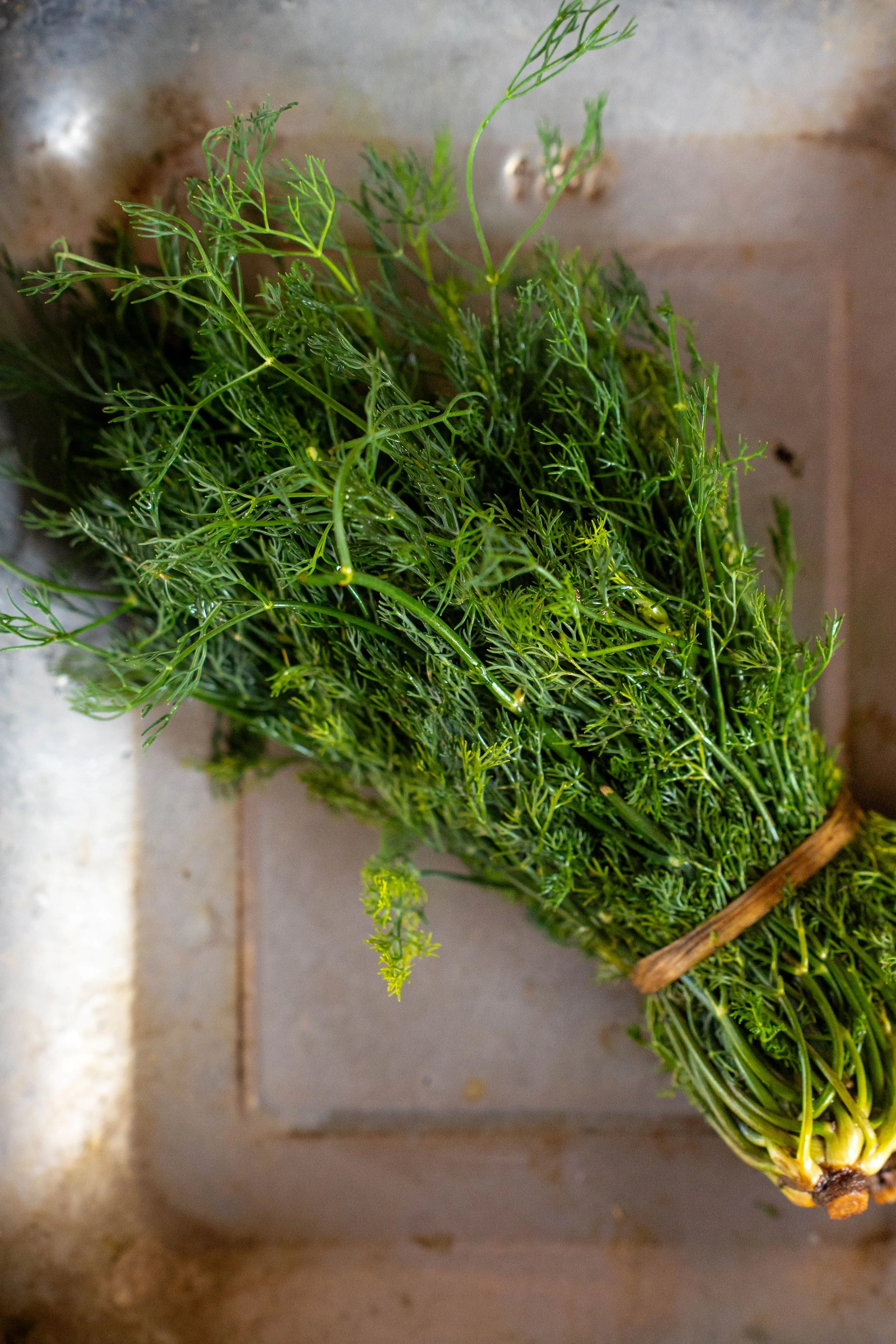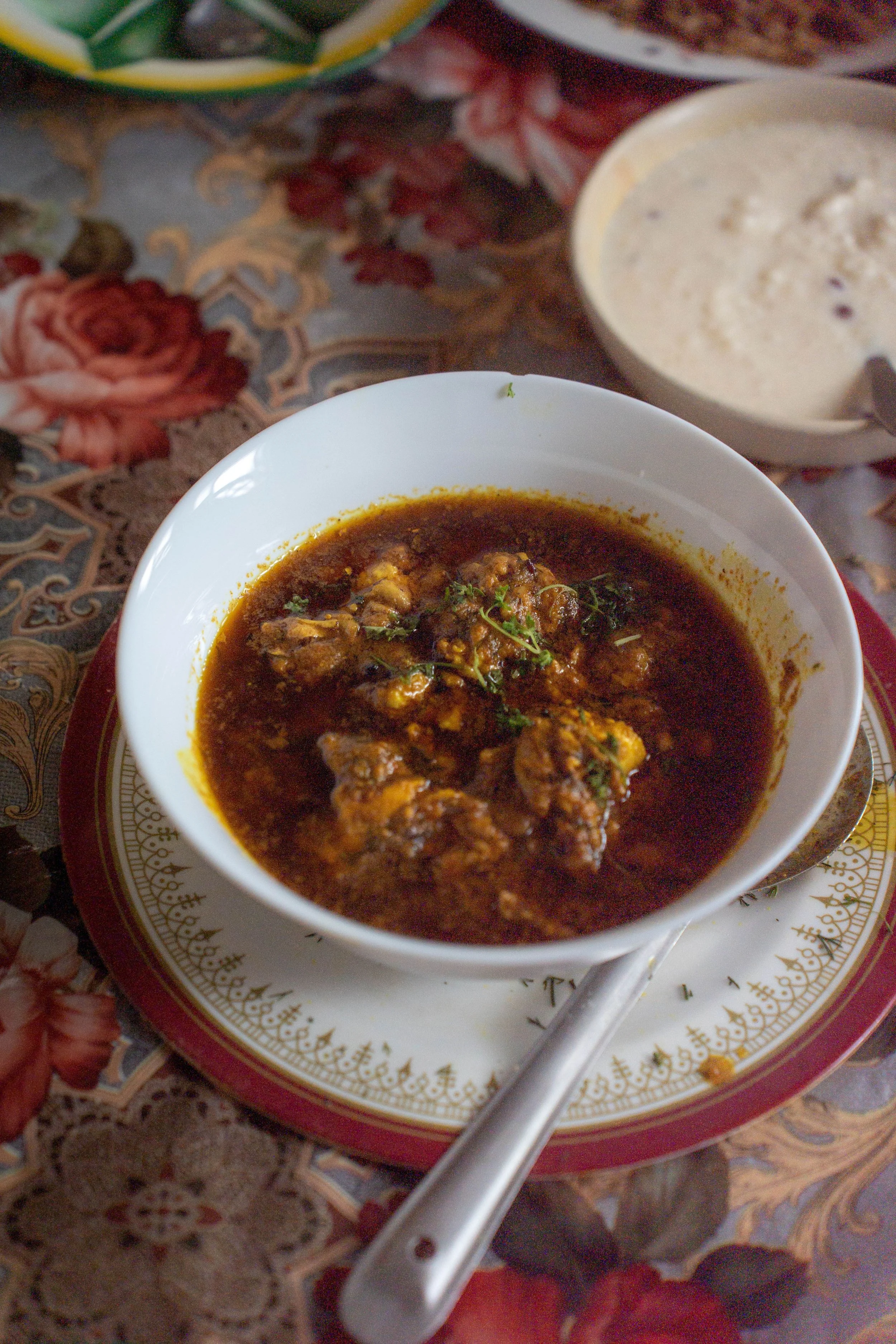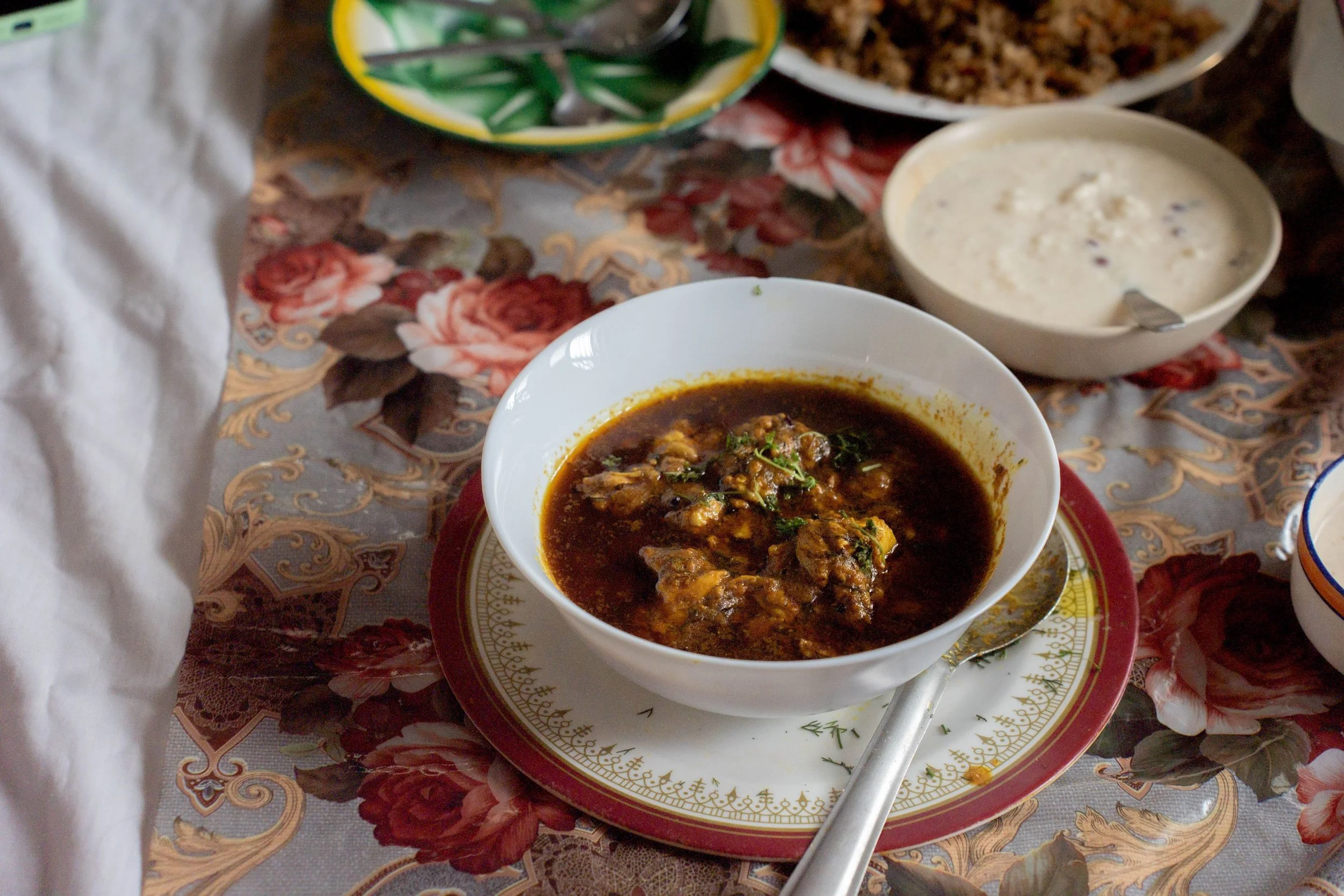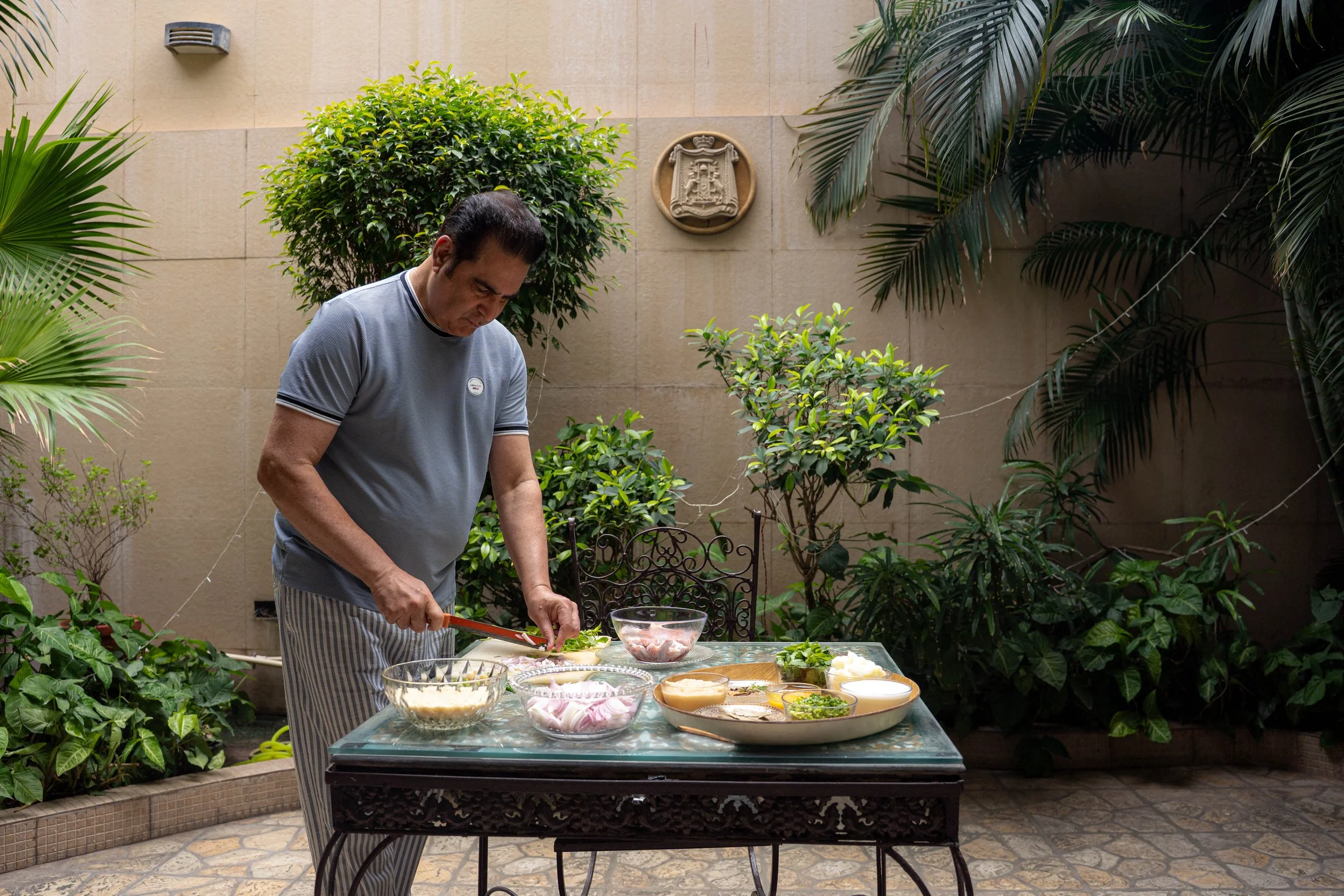#1000Kitchens: Three Generations, One Special Eid Cook-up

At Goya, celebrating home cooks and recipes have always been at the heart of our work. Through our series, #1000Kitchens, we document recipes from kitchens across the country, building a living library of heirloom recipes that have been in the family for 3 generations or more. In this edition, Taiyaba Ali joins her mother and aunt in cooking a typical Bakhrid specialty, a bheja masala scented with dill. It’s a dish that is the legacy of her maternal family and a staple at their family celebrations.
This season’s stories are produced in partnership with the Samagata Foundation—a non-profit that champions meaningful projects.
This year’s Bakhrid felt very different from those of my childhood. The days once filled with ritualistic frenzy: the slaughter and distribution of meat, the exchange of greetings, the arrival of hissa or meat parcels from friends and family were replaced instead by a quiet afternoon and a simple desire to mark the festival symbolically.
Bakhrid is not a festival in the same celebratory sense as Eid-ul-Fitr. What defines the day is the act of qurbani, or animal sacrifice, when a goat or water buffalo is ritually slaughtered in Muslim homes in remembrance of Prophet Ibrahim’s offering. It is an observance that carries duty and humility. The meat is distributed first to the less privileged, then to neighbours, and only finally shared within the family.
Since we had delegated our qurbani to an associated mosque, and it was unlikely that any offal would reach us, we sourced some bheja or goat’s brain from our butcher.
The older construction and red brick version of our house had an angan or courtyard which allowed for the qurbani operations to spread out, from slaughtering to butchering and distribution. Men in the family did the heavy lifting with the butcher, while children were the runners. Mid-way through the operations, the aromas of browning meat and mustard oil would fill the courtyard — my mother was already underway cooking kaleji (liver) curry for everyone. At my family home in Lucknow, meals on this day are usually offal-centric — liver, brain or trotters of the slaughtered animal are cooked and consumed with a rigour unlike any other occasion and the best cuts are reserved for others.
This year, around noon, my mother [Farah Deeba] and I started preparations for the curry. I sat on the floor with the pale and fragile brain resting in my palm, its folds like soft ripples on still water. The challenge was to keep the brain intact or ekjut, as my mother calls it. Fine red threaded capillaries of blood clung stubbornly to it. The work demanded stillness, and yet a thousand thoughts raced through my mind. I had eaten bheja several times and loved it, yet this was the first time I was handling and attempting to cook it with my mother.
I was failing faster than I cared to admit, and my mother’s look — her silent disapproval said it all: the recipe had already slipped from my grasp before it ever reached the stove. Yet I continued, intently picking at the vessels, half in frustration and half in defiance. What struck me most was her insistence on retaining form; not only of the brain, but of so many aspects of our cooking. It was not just her but this Lakhnawi obsession with intactness, elegance, restraint. These unspoken rules of cuisine often feel heavier than the recipes themselves, but nafasat and nazakat — precision and subtlety — are not just words. They are everyday practice and philosophy in our kitchens. The locals, including me, use minimal spices to enhance the flavour of food, opting for whole spices and browning of meat and vegetables with the onions to extract the flavours. Green chilli is still preferred for heat and pulled out from the final dish at the end.
Once the cleaning was done, we decided to take it to my mother’s aunt Rafat Nomani, whom we lovingly called Nanu Aunty, who lives a hundred metres away with her husband, Shoaib Nomani aka Uncle Nana. Since this recipe was passed down in my maternal family, it made sense to share and cook it with those to whom it belonged.
When I started documenting food from Lucknow homes, I realised that there were no voices representing Lakhnawi women and their contribution to the local cuisine. No one knew anything about the city beyond the Nawabs. That’s when I decided to tailor menus that showcased different communities and their kitchens — a peek into the past but also a very thriving and present culinary culture.
Most of my cooking practice takes root in my maternal side of the family, which is very quintessentially Lakhnawi. Mustard oil, whole spices, herbs and seasonal produce form the backbone of our food. Our curries shift with the year, adapting to what is available in the markets and celebrating each season to the fullest. Red meat, whether mutton or water buffalo is cooked with vegetables in all meat-eating homes in Lucknow. In summers, lauki (bottle-guard), ghuiyan (colocasia), torai (sponge gourd) is turned into simple subzi or a stir-fry, but also much cherished when cooked with meat in a simple mustard oil curry called salan. In winters, the combination is replaced by winter roots like turnips, beetroot, and tomatoes.
Everyone in the family has a favourite cook, but for me it is Nanu Aunty. She makes the best vegetarian food, and her gentle musical humming while cooking adds unmatched flavour.
To make a brain curry, there are two non-negotiables: a healthy glug of mustard oil, and dill leaves — for fragrance as much as flavour. Khushbu or aroma captivates the diner even before a bite is taken, but herbs like dill (soya) are especially important in offal and fish dishes, where they help mask any unpleasant smell. Each winter, dill leaves are sundried and stored for use throughout the year. One may now find them off-season, thanks to cold storage and hydroponics, but for traditionalists like our family, the latter is never quite good enough. As for the mustard oil, Nanu Aunty insists it should be added with a khula haath or a generous hand, since it is essential for the bhunai, the slow browning of the onion–ginger–garlic base to extract.
As my mother and Nanu Aunty huddle around the stove, I step back to observe the cooking, to take notes, but also to witness my mother being schooled by her aunt, which is a rare and cherished sight. Nanu Aunty added the ingredients one after the other, while my mother lined them up, nodding in agreement.
Farah Deeba (standing) and her aunt, Rafat Nomani or Nanu Aunty.
The brain cooks quickly, so the misé en place must be ready: mustard oil and fenugreek seeds for tempering, onion–ginger–garlic paste for the masala, staple spices like coriander, chilli, turmeric, garam masala, a spoonful of curd for richness, salt, and finally the chopped dill leaves. More than the ingredients, it is the attention and gentleness that makes this curry special. Bheje ko bicha diya jata hai — the pieces of the brain are carefully laid out in the simmering curry, not tossed in hastily. When cooked, the brain holds its shape. It is at once firm and fragile, with a buttery creaminess that soaks up the masala. It is best eaten with hot rotis, which my mother rolled out at marathon speed as the curry simmered alongside.
Even though we had enough bheja and roti for everyone, Nanu aunty brought out kheer and some pulao that she had made earlier — it was a festive day after all! I laid the dastarkhwan on the bed and laid out the food, just like old times when the dining table wouldn’t suffice and everyone huddled and squeezed onto the bed with their plates and ate together.
The women in our kitchens have long carried the unacknowledged responsibility of maintaining the rhythm of rituals, the nuances of taste and the textures of memory. Perhaps out of love, perhaps out of duty. But in the process, it has become abundantly clear that the heirlooms are fragile, and like the brain itself, they demand gentle handling if they are to survive.
NANU AUNTY’S RECIPE FOR BHEJA
Cooking time: 30 minutes
Prep time: 30 minutes
Ingredients
1 kg of goat brain, deveined and cleaned with warm water.
300g of raw onion paste
100g of ginger-garlic paste
1 heaped tsp of coriander powder
½ tsp of turmeric powder
½ tsp of fenugreek seeds
½ tsp of garam masala
25 g of whisked curd
200 ml of mustard oil
Salt to taste
A handful of chopped fresh dill leaves or 1 tablespoon of dried dill to finish
Method
First, clean the brain. Dip the offal in warm water and gently pick out the mesh of blood capillaries. Take your time with it to prevent it from tearing apart.
In a heavy-bottom vessel, heat mustard oil to get rid of its pungency and sprinkle the fenugreek seeds. Stir as they splutter.
Add the onion paste before the seeds turn too dark, else they will leave a bitter taste.
As the onion paste starts changing colour, add the ginger-garlic paste and stir it well.
When the oil starts resurfacing, add the dry spices — turmeric, red chilli, coriander and garam masala powder and salt. Mix well and keep stirring occasionally to stop the masala from sticking to the pan.
Add whisked curd and cook till it is well incorporated.
Once the masala is browned well and all the oil has come to the top, gently lay in the brain. Stop stirring here.
Gently pick up the vessel and swirl it for the masala to settle and cover the brain equally. Do not use a spoon to mix.
Sprinkle the dill leaves and cover with the lid. Turn the gas flame to a simmer for 12-15 minutes.
Serve hot alongside roti, onions and green chillies.
Words by Taiyaba Ali. Images by Sanskriti Bist.
Special thanks to our partners.
ALSO ON GOYA

